The only thing for me that rivals the satisfaction of running a personal best at a race is training a client to do so. Last weekend, two of my clients nailed their races at the Way Too Cool 50K and the Napa Valley Marathon, in spite of a short training period of about two months. A combo of smart training and race-day execution paid off. I’m using this post to spotlight what worked for them because they are fairly typical mid-pack runners with whom I bet a lot of readers can relate. Subtle but important changes to their weekly routines and race-day plans made big differences and might help you, too.
Meet Heather and Jacob
I’ve been coaching Heather Sutherland off and on for a couple of years. She’s 45, has a busy full-time work schedule, two kids, lives in the South Bay with access to trails, and has been running trails at the marathon and shorter distance for a little over a decade. In 2012, she graduated to 50Ks and ran six of them over a four-year period. Last spring, I coached her to finish her first 50-miler at Lake Sonoma, and she met her goal of finishing under 12:30 (by one minute!).
Heather hired me again in December after she gained a spot in this May’s Miwok 100K. We outlined a training plan for January through spring to build up to Miwok, with the March 4 Way Too Cool 50K as a key practice race and stepping stone toward her main goal. I pushed her to set a goal of PR’ing at Way Too Cool; she has run it twice before, finishing 6:46 and 6:42. I firmly believed she could get under 6:40 this year and possibly stretch to sub-6:30. We prioritized improving speed and efficiency because her average pace at the Lake Sonoma 50M (14:58/mile) is a tad too close for comfort to make the cutoff times at the Miwok 100K.
Jacob Kaplan-Moss hired me around new year’s because he made the gutsy goal of participating in this September’s Grand to Grand Ultra stage race (seven days, self-supported, 170 miles), and he knew I had experience racing that particular event and coaching others for it. He’s 35, started running about eight years ago, and has successfully finished shorter trail races and a few 50Ks. He has a busy full-time job and lives in Davis, where the terrain is very flat, so he can only run hilly trails on weekends. Beyond prepping for the stage race, he also wanted a coach because he has struggled to go beyond the 50K; he “death marched” to the finish of his one and only 50-miler, the 2016 Bryce Canyon 50, and DNF’ed the Cuyamaca 100K last fall. He plans to do a couple of 50Ks and a 50-miler this summer leading up to the Grand to Grand Ultra.
When Jacob contacted me, he had already registered for the March 5 Napa Valley Marathon. He wanted to run Napa for training and to enjoy the destination, but he felt ambivalent about really racing it. He had run two road marathons before—San Francisco and Big Sur—with a PR of 4:04. I encouraged him to take the Napa Valley Marathon seriously, with the goal of running a strong, steady sub-4-hour marathon. We made a plan to improve speed, fitness and consistency during January and February, and leverage that for a good performance at Napa, before switching gears to more specific 50K and 50M trail training later this spring and summer.
Heather and Jacob both shared the trait of being mid-pack trail runners who haven’t been very serious about competing; for them, enjoying the experience, graduating to a new distance and finishing feeling good (rather than “death marching” or DNF’ing) is victory enough. I gently but firmly encouraged them to take their racing more seriously, and to view themselves as legit competitors rather than mere mid-packers, in order to tap into their potential. By “legit competitors,” I mean they are racing the clock for a goal time, and striving to pass others toward the end for motivation, but not necessarily racing to place in a certain spot relative to others.
Training Highlights
Toward the end of 2016, neither Heather nor Jacob ran with great consistency. They had some good long runs that hit the teens in mileage and occasionally stretched to 20, but their weekday runs were somewhat sporadic and unfocused. I started working with Heather during the first week of January, and with Jacob in mid-January, which gave us only six to eight weeks to prepare for these races on the first weekend of March.
When I designed their individual weekly plans, I believed it would be a mistake to ramp up their mileage in less than two months to where I ideally would like to see it for a marathon and 50K—in the 50 to 60 miles/week range. That increase would be too much, too soon. Instead, we focused on establishing a consistent pattern of weekday runs, two of which were challenging because they incorporated speed intervals and hills. They also started strength training and physical therapy exercises two to three times a week, for approximately 15 to 20 minutes at a time, with an emphasis on core and balance.
Their long runs grew in duration gradually, and their weekly mileage total grew from the mid 30s to the mid 40s—not very high, but every workout had a purpose and fit into a pattern. Both grew more attuned to their pacing during speedwork and on long runs.
Jacob trained to become very comfortable with a marathon goal pace in the 8:50-8:55/mile range by doing a good amount of speedwork at a much faster pace, and by accelerating during the end of his long, slow runs to finish at this pace. We settled on a marathon goal pace of 8:50ish so that he could be sure to break 3:55 at the marathon, factoring in a bathroom stop if necessary. I believe he can finish a marathon sub 3:50, but we set a more conservative goal for Napa given the short training time horizon, and because he has never broken 4 hours at a road marathon. Also, he has a history of going out too fast at races and then slowing down significantly.
Jacob had two 16-mile runs in January, then raced the San Francisco Half Marathon on February 5; then, due to travel, his schedule allowed for only one significant long run before tapering for Napa. He completed a focused, successful 23-mile training run on February 23, on a paved route similar to the Napa marathon course, during which he practiced his marathon goal pace and finished with a faster mile.
Heather worked to grow more comfortable averaging 12-minute miles (5mph) on her long trail runs so that a sub-13-minute average pace would feel manageable when factoring in aid station breaks and extended hiking during tough uphills in her 50K. Heather completed three key long runs between January 1 and the March 4 Way Too Cool 50K: a 20-miler in late January, another 20-miler in early February, and a 26-mile trail marathon on February 11.
Finally, both Heather and Jacob raced a shorter race to practice pacing, refueling/rehydrating and mental strategies. They used these shorter races as dress rehearsals for their race-morning routine of getting ready and arriving at the starting line stress free.
Jacob raced the San Francisco Half Marathon in early February with the purpose of running the first few miles at his marathon (not half-marathon) goal pace, to learn what it feels like to hold back and establish a relaxed pace in the early miles; then, he used that event’s flat final five miles to simulate the final segment of the Napa Marathon, mentally tackling the seemingly endless paved straightaway and speeding up for a strong finish.
Heather raced the hilly Golden Gate Trail Marathon on February 11 with a goal of improving her efficiency through aid stations, powerhiking with purpose on the tough climbs, and gauging her steady pace to make sure she was comfortably under a 13-minute average pace.
By taking these practice races seriously and running them with focus—instead of running them “just for fun” as supported training runs—both gained confidence as well as a great workout.
Race-Day Strategy
A couple of weeks before the Napa Valley Marathon and Way Too Cook 50K, I worked with Jacob and Heather one on one to study the course profiles and aid station locations, so they could adequately refuel/rehydrate at these water stops and avoid carrying unnecessary stuff. Jacob—an ultra-distance trail runner accustomed to carrying a water bottle—realized he didn’t have to carry his own water in the road marathon given the frequency of water stops and the cool weather forecast. We made a plan to time his gel intake right before certain water stops, so that he knew ahead of time which water stops to drink at, and which to run past without slowing down. Heather, meanwhile, plotted where she would take a gel and where she would partake of the aid stations’ real-food snacks based on the Way Too Cool course profile.
The Early Miles: Then, we strategized about how to run the early miles. Jacob focused on staying relaxed and settling into his pace without getting carried away by the starting-line energy and without getting tangled up in the first mile’s crowd. He initially thought he should go slower than goal pace in the early miles, and speed up to goal pace or slightly faster in the middle miles, but I advised no, it’s better to settle into your goal pace right away, and establish and hold that rhythm; besides, the goal pace likely will feel relatively slow in the beginning since you’ll have frisky legs from tapering, and since so many others around you will start too speedy.
Heather, by contrast, needed to adjust her typical conservative starting pace and run faster than usual at the start. The Way Too Cool 50K begins with nearly a mile of wide, paved road and then funnels into 8 miles of rolling singletrack trail. The last two times she ran it, Heather got stuck behind lots of slower runners on this first portion of singletrack and felt confused about whether and how to pass. This time, I told her to run aggressively from the start to get ahead of slower mid-packers; let faster runners pass, but don’t be shy about getting ahead of slow pokes. “Go hard from the start to get a good spot on the singletrack,” I told her, “and then use my favorite piece of parenting advice: CTFD (Calm The Fuck Down).”
The Middle Miles: As we studied the middle portions of their race routes, we planned how to stay steady, how to stay mentally positive, and how to regulate calories and hydration. I reminded them of one of my favorite sayings that applies to both marathons and ultras: “There will be highs, and there will be lows, and neither will last very long.” If they feel a “high” or moments of mild euphoria, which is common in the teens to early 20 miles, and they think “I got this! I’m having a great day,” to not speed up significantly. Stay steady instead. Conversely, when (not “if”) they experience a low (e.g. “This sucks … the wheels are about to come off … this is not my day…”), to have faith that it will pass. Use those low points to check whether you need calories to nip a bonk in the bud, and/or whether you’re dehydrated.
I told them that if you’ve taken care of your calorie and hydration needs, then you’re likely experiencing normal mid-race fatigue, which is a sign you’re working hard. Don’t be discouraged by the fatigue; instead, congratulate yourself that you’re experiencing a sign of working hard and pushing yourself to achieve your best performance possible today.
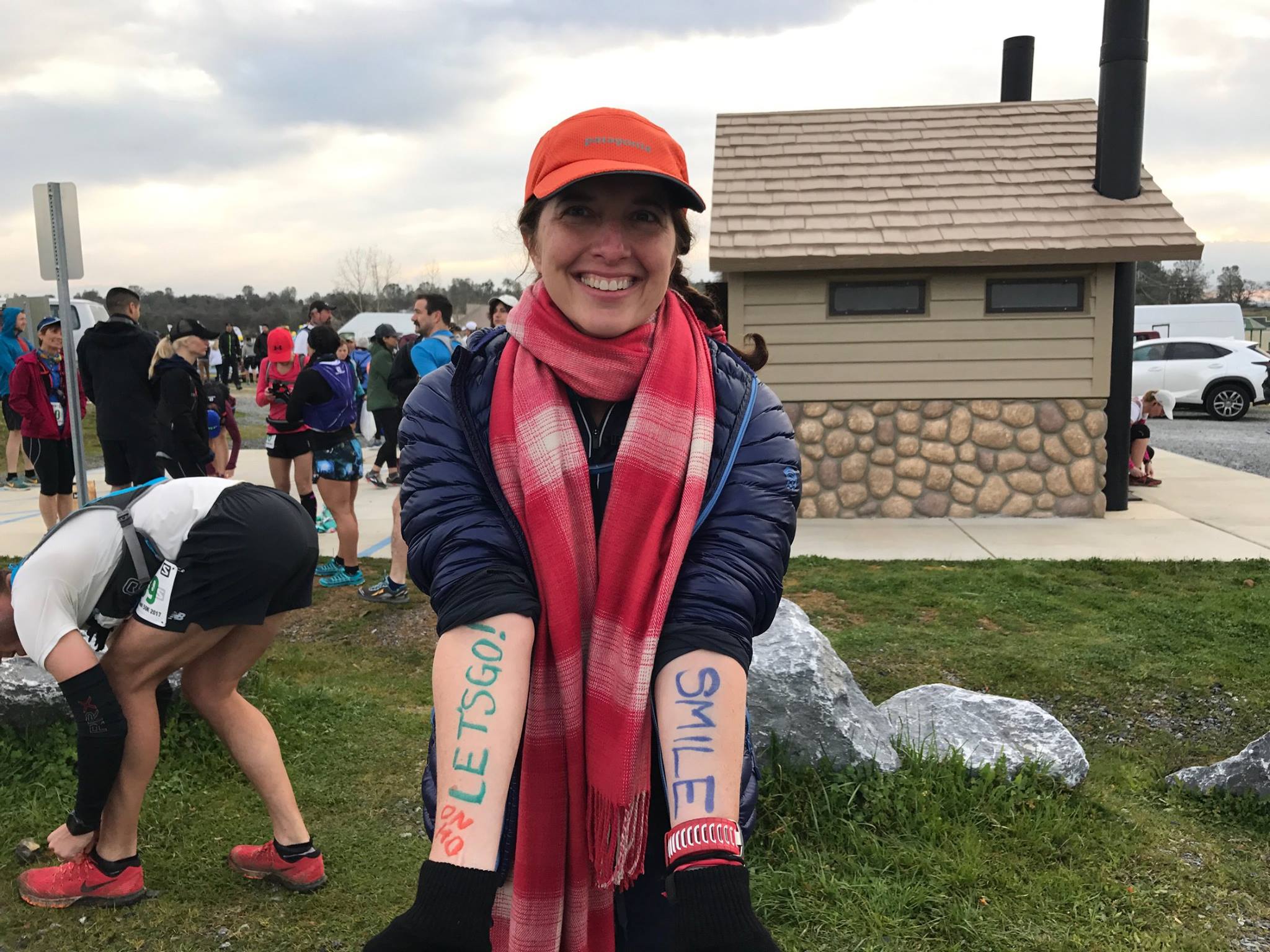
Heather, seen here at the start of the Way Too Cool 50K, took creative extra measures to reinforce her positive attitude mid-race.
The Finishing Stretch: Perhaps most importantly, we envisioned and planned for the final miles. I repeatedly warned Jacob about the Napa Marathon’s deadening final stretch—a purgatory of flat, straight-away pavement—and recommended he train on long-run routes with a similar finish. He psyched himself up to tackle the end and to pretend as if he were running a 10K or 5K, regardless of the fatigue from the first 20 miles.
When Jacob mentioned he might start listening to music toward the end, I advised against it, and not just because the event has a rule against headphones. In any race—especially when approaching the finish—putting on a music player, adjusting it and listening to music can be risky because if you lose time while fumbling with the device, or if you hear a song that doesn’t fit your mood, then you can get in a worse mood and become further distracted from the focus on racing. (I listen to music occasionally in extra-long ultras but not in 50K or shorter races.)
A better alternative, I suggested, is playing “The Road Kill Game” in the final stretch, wherein you give yourself one point for every person you pass, deduct a point for anyone who passes you, and see how many points you can earn by the finish line. It’s amazing how motivating and entertaining The Road Kill Game can be in the final miles of a race, especially in a road marathon when there are lots of people around (unlike an ultra where the participants are more spread out).
For Heather’s finish at Way Too Cool, we strategized about how to handle the final aid station, which is less than 2 miles from the finish, and the final gnarly little hill. We made a plan for her to ingest a final gel before that aid station, and ignore that last aid station altogether. Instead of stopping for aid and then wilting on that last insult of a highly technical hill, as many Way Too Cook 50K participants do, she would blow through and tackle the hill with purpose, then sprint to the finish in the final flat mile. Developing this plan and mentally rehearsing it made her excited about—rather than worried about—the final miles.
How They Did
“It was a really weird race for me,” Jacob told me afterward. “Objectively everything went really well—I was right on pace until the last 6 or so miles, when I was able to speed up—but it just felt hard. … It was a significant mental effort the whole time.”
That’s a road marathon for you, I told him. Road marathons, especially flatter ones, feel relentless and require constant focus when you race them, unlike a trail marathon or ultra where the variability of terrain and elevation will physically and emotionally give you more ups and downs.
“I felt really good about the gels and water stops—I was super efficient—but I was in one of those grumpy states mentally,” he added. Thankfully, he channeled his negativity into running harder. When it started to rain at mile 19, “I said, ‘Fuck it, if I run hard, I’ll get done sooner. I played The Road Kill Game and passed 60 people. Only three people passed me, and two I caught back up to again, which was awesome.”
His time: 3:49:21. Way to go! Whereas he averaged an 8:50 min./mile by the half-marathon mark, he finished with an overall average pace of 8:46/mile.
“Almost every other race I’ve run, other than these two [the San Francisco Half Marathon and Napa Valley Marathon], I feel I’ve gone out too fast. These are the only races where I feel I’ve had a plan and executed it and finished fast. … When I was done, I had nothing left, and I felt mostly relief, like, ‘Thank God it’s over!'”
Jacob is happy with the result and the training that led up to it—”I found myself looking forward to the speedwork … I’m running faster than before, and a lot more efficiently”—but he is not eager to sign up for another road marathon anytime soon. “I’ll be glad to get back to doing trails.”
Heather’s 50K also went according to plan, until she faced a couple of unforeseen challenges and deliberately had to work to stay strong and positive in the face of them.
First, she and other runners had to take a not-so-little detour around a washed-out section of trail about two-thirds of the way through, which added an extra not-so-little hill. Consequently, the elite-level runners generally posted slower times this year; women’s winner Meghan Roche, for example, was about 10 minutes slower than her winning times from the prior two years. Given the course condition, Heather knew that beating her prior best at Way Too Cool of 6:42, much less getting near her stretch goal of 6:30, would take Herculean effort.
“I kept thinking, ‘Try to be grateful for everything that’s going right’—I was grateful I had slept well, and that it wasn’t raining yet. I just tried to run as much as I could. But it was hard, really hard.” Rather than get discouraged, she reminded herself that feeling “this is really hard” was a good sign that she was pushing her effort to perform closer to her full potential.
Then, for no particular reason at around Mile 26, her Garmin watch blinked out, and she had to run without the objective measure of time and pace. She felt annoyed, distracted and momentarily distressed about her malfunctioning watch, “but I kept telling myself, ‘Just forget about it.'”
Approaching the finish, she followed our plan even though she had no idea of her time. “I blew through the aid station and smoked on the uphill, working really hard on that uphill, and when it flattened out, I ran as hard as I could. … I told myself that even if I don’t PR today, I’ll know that I left it all out there.”
Her time: 6:32:36. Way to go! Ten minutes faster than her prior Way Too Cool 50K best time, and I’m confident she would have gone sub-6:30 if the course didn’t have that reroute.
The Postmortem
It’s important to reflect not only on what went right, but what went wrong. A so-called “B” race that is a stepping stone to a more important race later in the season can be a great teacher (see related post). Both Heather and Jacob made mistakes that they, and I, learned from and hopefully won’t repeat at their A-level big ultras later this year.
Jacob realized a few miles into the marathon that he was wearing worn-out shoes that had more than 500 training miles on them. I made the mistake as a coach of assuming he made smart shoe choices and wore fresh shoes; I failed to ask him about his shoe choice ahead of time, and to remind him to time his shoe purchases so he’d have a fresh pair broken in for race day.
Heather experienced significant nausea around Mile 18, which made her slow her pace and engage in deep breathing until it passed. When we dissected what may have caused it, we realized that in addition to taking gels (which have electrolytes) and potatoes dipped in salt at aid stations, plus some salty pretzels, she also took a salt pill from an aid station mid-race. This amount of electrolytes almost certainly is excessive on a cool day when she wasn’t sweating an unusually high amount. Hypernatremia (too much sodium in the blood) can trigger nausea and water retention. I felt guilty as a coach that I had not quizzed her more closely pre-race on her typical electrolyte intake; I would have advised her to avoid the aid station salt pills. But, this is a valuable learning experience for us both that will help her prepare for the Miwok 100K.
I’m so proud of both Jacob and Heather and can’t wait to see how they do in their big ultras later this year. I thank both of them for letting me share their stories.
Bonus
If you want more training tips, then have a listen to the UltraRunnerPodcast episode that I recorded March 1 with Eric, a few hours after I finished the Salmon Falls 50K. This episode features a mini race report from me and lots of training advice about how to graduate to ultras while achieving consistent, effective training month to month. Disclaimer: Due to post-race fatigue, I developed a case of loopy logorrhea; and, I had a tickle in my throat, as usually happens post-ultra from heavy breathing, so I frequently and annoyingly clear my throat. But it’s a fun episode in which Eric and I spar and laugh a lot. I appreciate that he got me to talk about my book, The Trail Runner’s Companion: A Step-by-Step Guide to Trail Running and Racing, from 5Ks to Ultras (isn’t that a long subtitle that promises the moon?), which is being published in May. I’ll link to the amazon page for pre-orders as soon as the publisher finalizes the cover and pub date.
As Eric says, “And now, go out and run.”

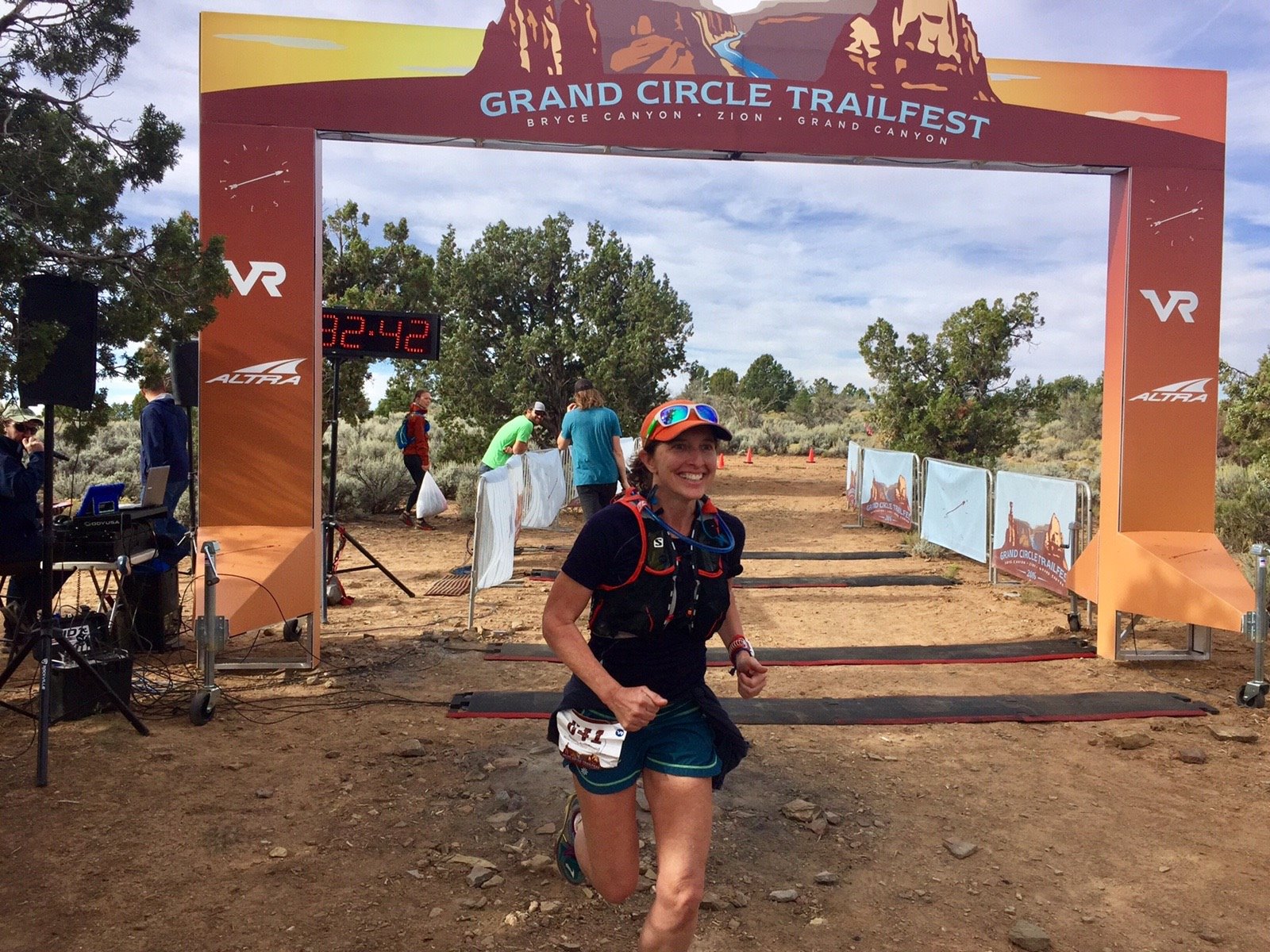
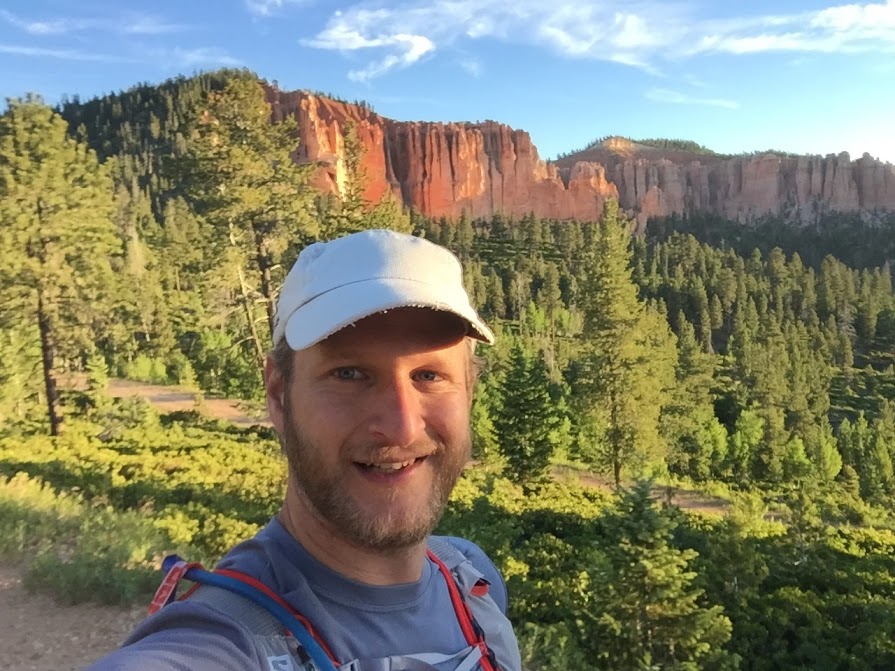
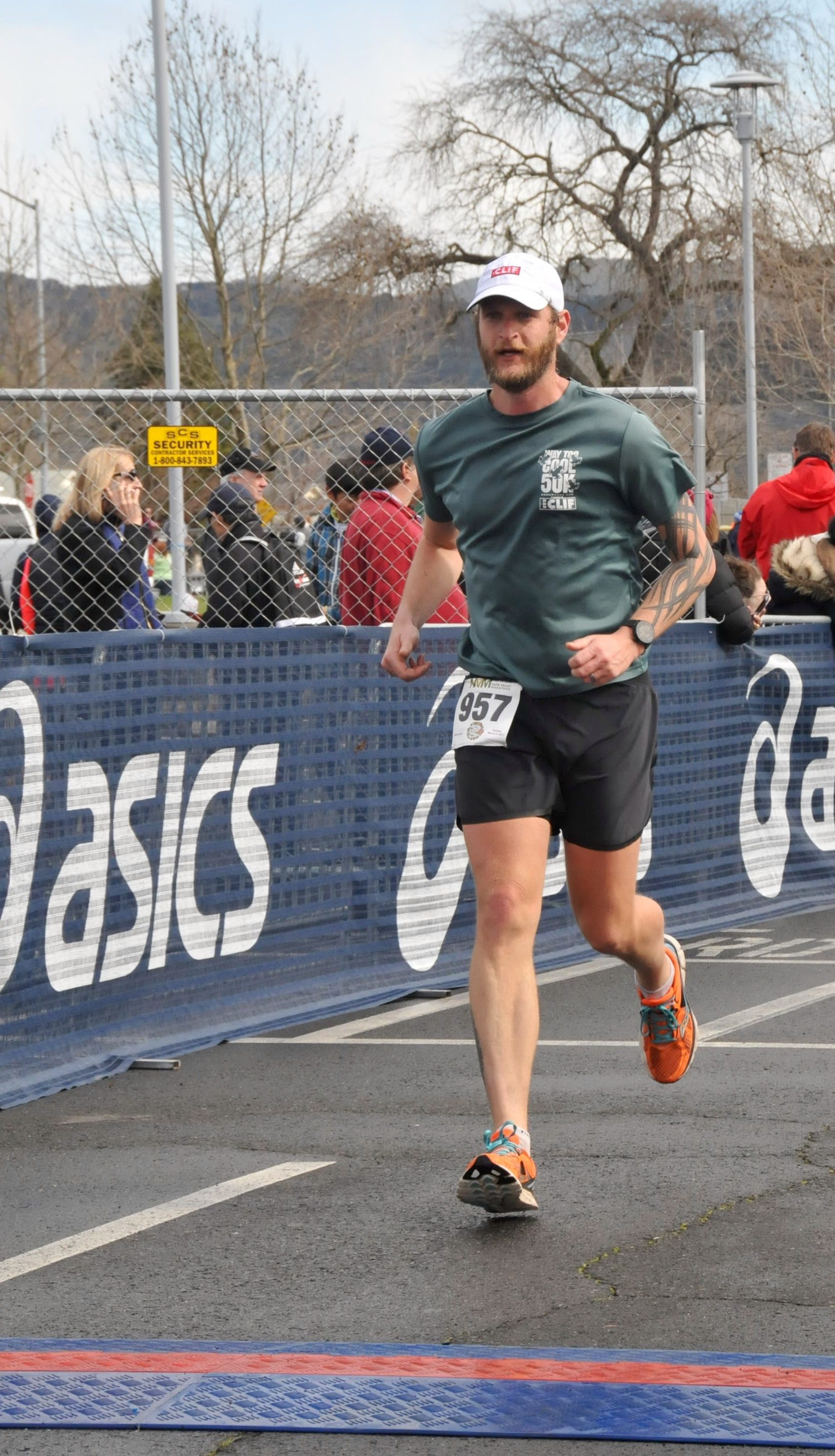
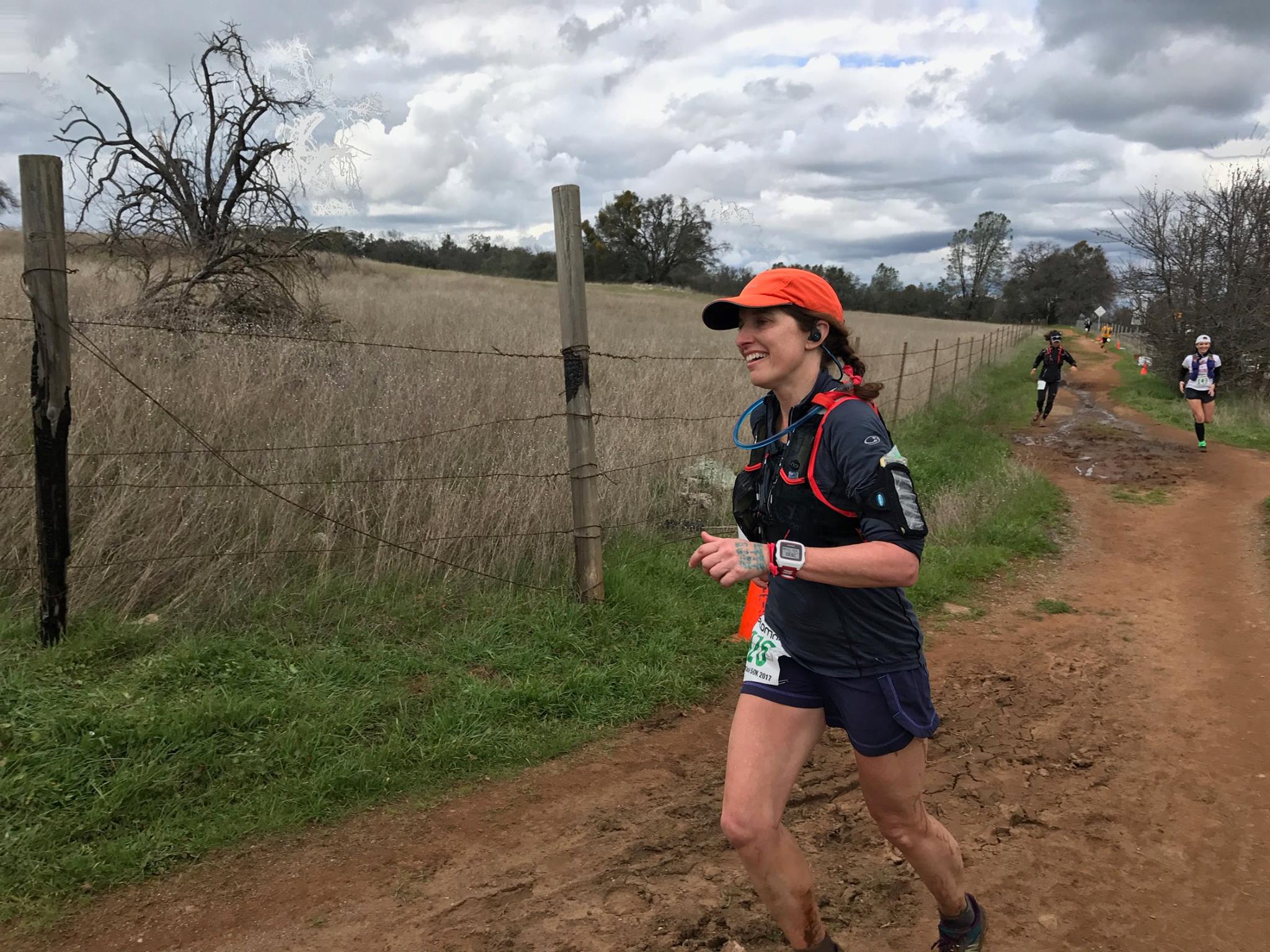
Thanks for the blow by blow on these two athletes and congratulations to them and you on their success. I have a half Marathon end of March and Oakland April 2nd. I almost didn’t sign up of the SF R&R but figure it’s a great dress rehearsal and I’m not in it to win it but just take it easy and stay in Marathon pace. I was going to run a 12 mile that day anyway. I’m encouraged that they were able to be successful on lower base milege. I have averaged 45 to 55 per week in the last month and have my taper planned pretty well. Thanks for the great tips! BTW I’m savoring the URP episode to kick off my home stretch of training next week! : )